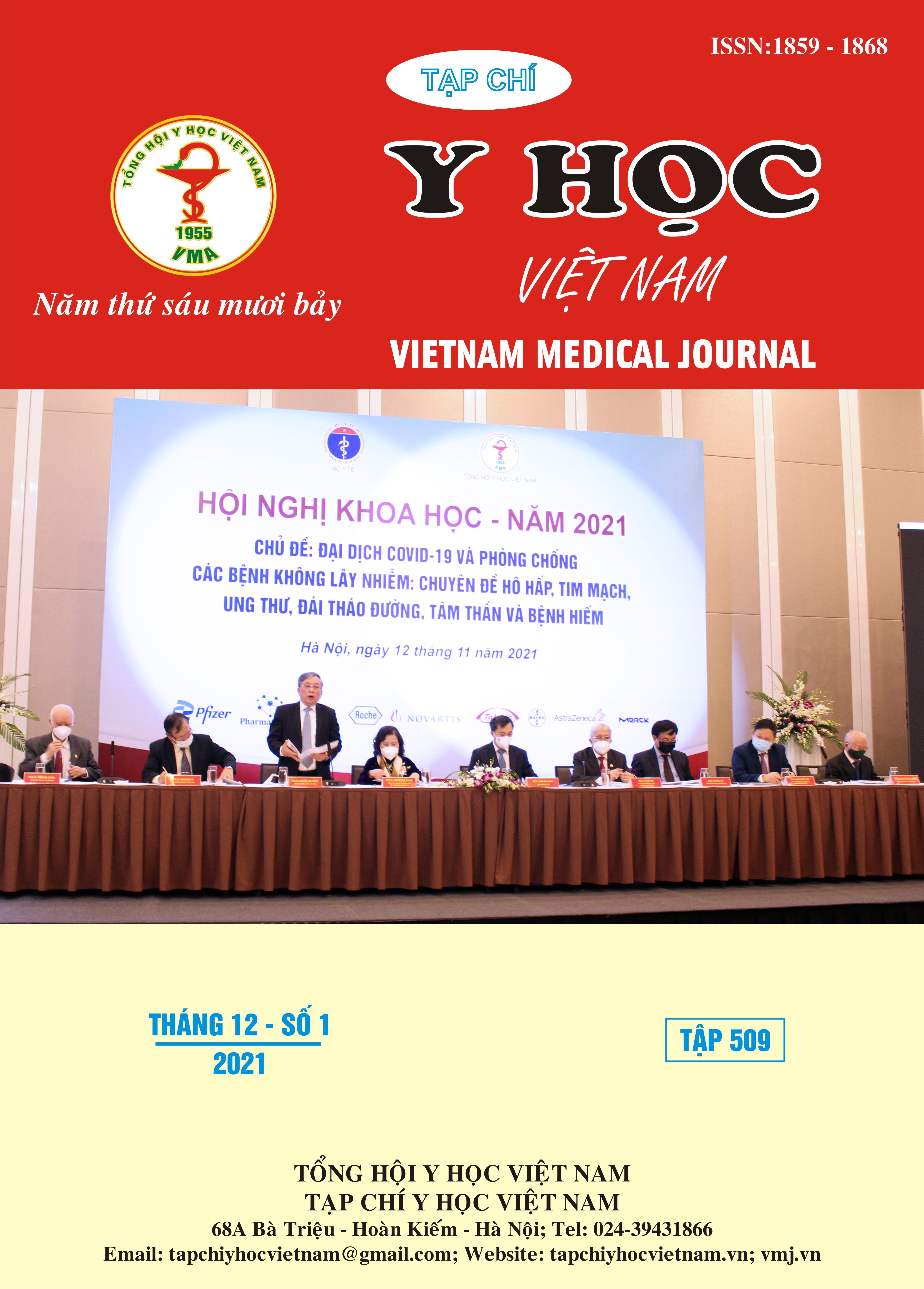CURRENT TITUATION OF PREHOSPITAL CARE THROUGH THE BRAIN TRAUMATIC INJUFY DUE TO TRAFFIC ACCIDENT HAVE BEEN TREATED AT VIET DUC UNIVERSITY HOSPITAL
Main Article Content
Abstract
Introductions: Prehospital care, especially trauma emergency is playing an important role to reduce morbidity and mortality, especially brain trauma related to traffic accident. We conducted a study through emergency cases at Viet Duc University Hospital aiming to assess the situation of prehospital care and to make recommendations. Materials and methods: All patients with brain trauma due to traffic accident have been treated at the hospital during the period from December 31, 2020 to March 31, 2021, regardless of gender, age, locality and profession, have complete records, including deaths. Data were processed using SPSS 20.0 software. Results: A total of 200 patients with severe brain trauma due to traffic accident were enrolled, age group from 21-60 years old accounted for 67.5%, males in 88.5%; Injuries associated were: maxillofacial trauma accounted for 44%, limb injuries accounted for 23.5%, chest trauma 22%. The number of patients were provided the first aid at medical facilities accounted for 96.5%; Transportation by ambulance accounted for 98%; Medical staff accompanying patients while transporting accounted for 97%. The procedures provided were IV accounted for 97.5%, intubation and airway assessment with the rate of 85% and 84.5% respectively, collier for spine injury was in 37,5%. The treatment on emergency at the hospital: 42% were operated on emergency. Treatment results: released to die accounted for 24.5%, death in hospital 0.5%, overall mortality was 25%. Conclusions and recommendations: The study showed that brain trauma due to traffic accident at Viet Duc University Hospital, having access to prehospital care have improved, most of the patients were initially provided the first aid at the medical facilities and transported by ambulances. However, the mortality rate is still related high, we recommend strengthening the prehospital care especially with traumatic brain injury.
Article Details
Keywords
Traumatic brain injury, Injury, Pre-hospital care
References
2. Naseef Abdullah, Colleen Saunders, Michael McCaul, Peter Nyasulu. A retrospective study of the pre-hospital trauma burden managed by the Western Cape Government Emergency Medical Services. SAJPEC | http://www.journals.ac.za/ index.php/sajpec/ | June 2021 Vol. 2(1): 18-26.
3. JICA. Báo cáo thực trạng hệ thống sơ cấp cứu tại Việt Nam giai đoạn 2007-2009. 2009.
4. Cục quản lý môi trường Y tế Việt Nam. Thống kê tử vong do tai nạn thương tích. 2014 - 2016.
5. Nguyễn Đức Chính, Đỗ Mai Dung, Trần Tuấn Anh, Ngô Thị Huệ. Tình hình tai nạn giao thông qua các trường hợp cấp cứu tại Bệnh viện Việt Đức 2016 – 2018. Tạp chí Y học Dự phòng, 2019, 29(8): 135-140.
6. Lương Mai Anh, Nguyễn Thị Thu Huyền, Nguyễn Bích Hải. Kết quả triển khai chăm sóc chấn thương trước viện tại Thừa Thiên Huế giai đoạn 2012-2013. Tạp chí Giao thông vận tải, 2016, 57: 134-137
7. Douglas N, Leverett J, Paul J, Gibson M, Pritchard J, Brouwer K, Edwards E, Carew J, Donovan J, Bourke E, Smith E. Performance of First Aid Trained Staff using a Modified START Triage Tool at Achieving Appropriate Triage Compared to a Physiology-Based Triage Strategy at Australian Mass Gatherings. Prehosp Disaster Med. 2020 Apr;35(2):184-188.


